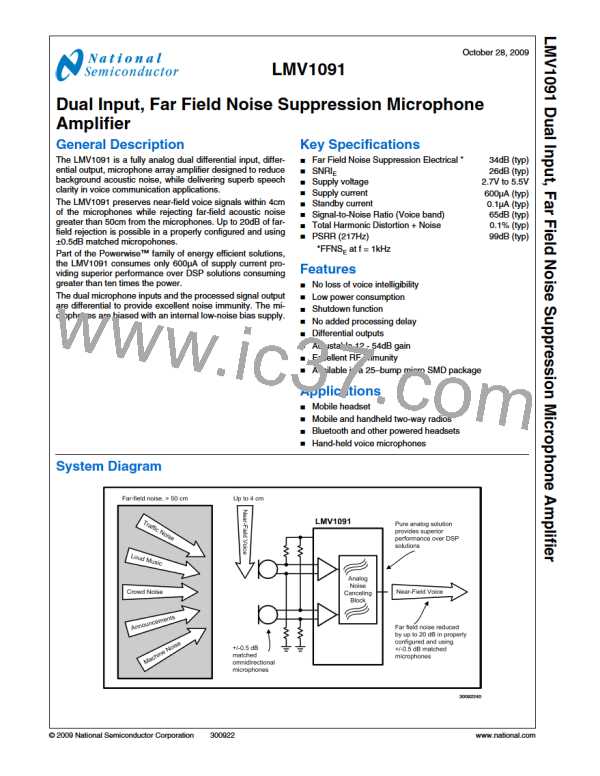Low-Pass Filter At The Output
A-Weighted Filter
At the output of the LMV1091 there is a provision to create a
1st order low-pass filter (only enabled in 'Noise Cancelling'
mode). This low-pass filter can be used to compensate for the
change in frequency response that results from the noise
cancellation process. The change in frequency response re-
sembles a first-order high-pass filter, and for many of the
applications it can be compensated by a first-order low-pass
filter with cutoff frequency between 1.5kHz and 2.5kHz.
The human ear is sensitive for acoustic signals within a fre-
quency range from about 20Hz to 20kHz. Within this range
the sensitivity of the human ear is not equal for each frequen-
cy. To approach the hearing response, weighting filters are
introduced. One of those filters is the A-weighted filter.
The A-weighted filter is used in signal to noise measurements,
where the wanted audio signal is compared to device noise
and distortion.
The transfer function of the low-pass filter is derived as:
The use of this filter improves the correlation of the measured
values to the way these ratios are perceived by the human
ear.
This low-pass filter is created by connecting a capacitor be-
tween the LPF pin and the OUT pin of the LMV1091. The
value of this capacitor also depends on the selected output
gain. For different gains the feedback resistance in the low-
pass filter network changes as shown in Table 6.
This will result in the following values for a cutoff frequency of
2000 Hz:
TABLE 6. Low-Pass Filter Capacitor For 2kHz
Cf (nF)
Post Amplifier Gain Setting (dB)
Rf (kΩ)
20
6
3.9
2.7
2.0
1.3
1.0
9
29
12
15
18
40
30092210
57
FIGURE 10: A-Weighted Filter
80
17
www.national.com

 NSC [ National Semiconductor ]
NSC [ National Semiconductor ]